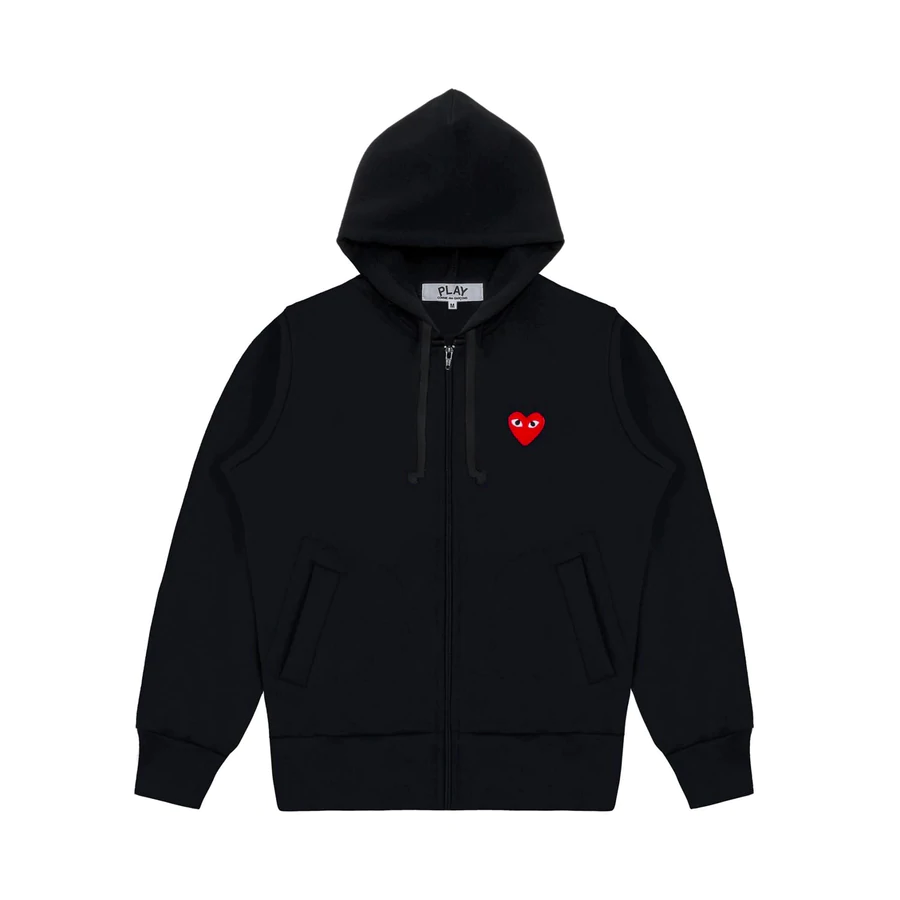In the world of fashion, few names command as much intrigue and admiration as Comme des Garçons. Founded by the visionary designer Rei Kawakubo, the brand stands as a rebellion against convention, a defiance of the predictable, and a celebration of the unexpected. From avant-garde runway creations to its cult-followed sneaker collaborations, Comme des Garçons has become synonymous with fearless creativity.
The Origins of Comme des Garçons
The story of Comme des Garçons began in Tokyo in 1969, when Rei Kawakubo — an art graduate turned designer — launched her label, which translates to “Like Boys” in French. The name reflected Kawakubo’s desire to challenge traditional gender norms and question the boundaries of beauty. Her early collections broke away from the glamour-driven aesthetic of the time, embracing asymmetry, deconstruction, and muted tones that contrasted sharply with mainstream fashion trends.
By the early 1980s, Comme des Garçons made its Paris debut, shocking audiences with distressed fabrics, unconventional silhouettes, and an almost poetic darkness. Critics were divided — some hailed Kawakubo as a genius, while others dismissed her work as anti-fashion. Yet, it was precisely this polarizing energy that positioned the brand as a pioneer of avant-garde design.
Rei Kawakubo: The Genius Behind the Movement
Rei Kawakubo is not just a designer — she is a philosopher of fashion. Her approach goes beyond clothing; it’s an exploration of form, identity, and imperfection. She has often described her creative process as one that begins with “nothingness,” allowing ideas to evolve organically rather than fitting into traditional concepts of beauty or wearability.
Kawakubo’s work reflects her belief that fashion can exist as art — abstract, emotional, and intellectual. Each CDG Hoodie collection is a study in contrasts: fragility and strength, chaos and control, beauty and distortion. Through her eyes, fashion becomes a medium of communication, questioning societal norms and redefining aesthetics in every stitch.
The Comme des Garçons Universe
Over the decades, CDG has expanded into a universe of sub-labels and collaborations, each with its own identity yet united under Kawakubo’s creative direction. Lines such as Comme des Garçons Homme Plus, Comme des Garçons Shirt, and Comme des Garçons Play cater to different audiences while retaining the brand’s distinctive edge.
Comme des Garçons Play, in particular, has become one of the most recognizable faces of the brand. Its iconic heart-with-eyes logo, designed by Polish artist Filip Pagowski, perfectly captures the label’s playful yet subversive nature. While the mainline focuses on avant-garde design, Play bridges the gap between high fashion and streetwear, making CDG Shirt accessible to a broader audience without diluting its artistic integrity.
Comme des Garçons and the Sneaker Revolution
When it comes to merging fashion and sneakers, Comme des Garcons stands as a trailblazer. The brand has mastered the art of collaboration, teaming up with some of the biggest names in the sneaker world. Its partnerships with Nike, Converse, and Jordan Brand have produced some of the most sought-after sneakers in recent years.
The Comme des Garçons x Converse Chuck Taylor is perhaps the most iconic of them all. Its minimalist design, adorned with the signature red heart logo, has become a global symbol of casual luxury. This collaboration perfectly represents the synergy between high fashion and street culture — timeless, versatile, and instantly recognizable.
In contrast, Comme des Garcons Homme Plus has taken sneaker collaborations into experimental territory. Their reimagined Nike Air Force 1 and Air Foamposite designs push boundaries with unique textures, exaggerated shapes, and futuristic materials. These sneakers aren’t just footwear — they’re wearable art, challenging traditional sneaker aesthetics while maintaining functionality.
The Philosophy of Imperfection
At the core of CDG lies a powerful philosophy — beauty in imperfection. Kawakubo’s designs often reject symmetry and traditional tailoring. Garments appear unfinished, distressed, or asymmetrical, yet every detail is deliberate. This concept echoes the Japanese aesthetic of wabi-sabi, which embraces the beauty of impermanence and imperfection.
In a world obsessed with perfection and polish, CDG offers a refreshing alternative. It reminds us that fashion doesn’t need to be flawless to be beautiful; it needs to be authentic. This ethos resonates deeply with creative individuals who value self-expression over conformity.
Influence on Contemporary Fashion
The impact of CDG extends far beyond the runway. Kawakubo’s fearless experimentation has inspired generations of designers, from emerging avant-garde talents to established luxury houses. Her influence can be seen in the rise of deconstructed tailoring, oversized silhouettes, and the blending of streetwear with high fashion.
Brands that once prioritized conventional beauty now embrace imperfection and abstraction — a testament to Kawakubo’s lasting effect on the industry. Even in sneaker culture, her approach to minimalism and logo design has shaped the way brands approach collaborations and branding strategies today.
The Comme des Garçons Experience
Walking into a CDG store feels less like shopping and more like entering an art installation. Each boutique is meticulously designed to reflect the brand’s creative philosophy. Whether it’s the futuristic layout of Dover Street Market or the minimalist charm of its flagship stores, every detail enhances the storytelling experience.
Dover Street Market, co-founded by Kawakubo and her husband Adrian Joffe, serves as a global hub for innovation and collaboration. It’s a place where fashion, art, and culture converge — showcasing not only CDG but also emerging designers who share its avant-garde spirit.
Comme des Garçons in Streetwear Culture
In recent years, CDG has cemented its place within global streetwear culture. Its logo-driven pieces, especially from the Play line, have become staples in the wardrobes of sneaker enthusiasts and fashion-forward youth. Paired with sneakers from collaborations like Nike Air Max 97 or Chuck Taylor 70s, the brand’s minimalist designs create an effortlessly chic statement.
The label’s ability to balance luxury craftsmanship with street sensibility is what keeps it relevant. It’s not just about clothes or sneakers — it’s about an attitude, a statement of individuality in a mass-produced world.
The Future of Comme des Garçons
Even after decades of redefining fashion, CDG shows no sign of slowing down. Kawakubo continues to challenge the industry with collections that defy categorization, while younger designers under the brand’s umbrella carry forward her legacy with fresh perspectives.
As sustainability and digital fashion reshape the landscape, CDG remains uniquely positioned to adapt without compromise. Its commitment to creativity over conformity ensures it will continue inspiring future generations of designers, artists, and sneakerheads alike.
Conclusion
Comme des Garçons is more than a brand — it’s a movement. It represents freedom, rebellion, and the courage to see beauty where others see none. From avant-garde runways to everyday streetwear, from conceptual designs to cult sneaker collaborations, Comme des Garçons has proven that fashion can be both artistic and accessible.



